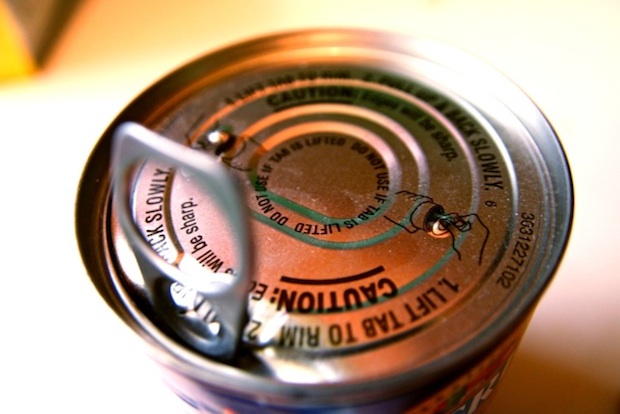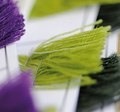Toyota Unveils Its Hybrid Yaris Subcompact at The Geneva Auto Show
by: Inhabitat , 2011-03-05 16:27:50 UTC

Toyota just made hybrid cars a whole lot more accessible by debuting the Toyota Yaris sub-compact hybrid at this week’s 2011 Geneva Motor Show. Hybrids that are currently available typically cost upwards of $20,000, and aren’t accessible to the entry-level fuel conscious market. The sub-compact hybrid Yaris, though, may change all that. The B-segment car, made for Europe right now — where smaller cars are more common place, shows Toyota’s commitment to downsize its proven full hybrid technology. The Yaris Hybrid will go on sale in Europe next year, though no word yet on whether it will have a U.S. debut.


Read the rest of Toyota Unveils Its Hybrid Yaris Subcompact at The Geneva Auto Showhttp://www.inhabitat.com/wp-admin/ohttp://www.inhabitat.com/wp-admin/options-general.php?page=better_feedptions-general.php?page=better_feed
Permalink |
Add to
del.icio.us |
digg
Post tags: b-segment hybrid, geneva auto show, subcompact hybrid, Toyota, toyota hybrid, toyota yaris hybrid, yaris, yaris hybrid, yaris subcompact, yaris subcompact hybrid
An Edible Art Book Made From Sugar Paste
by: TreeHugger Design, 2011-03-03 12:51:50 UTC
 From our friends at Fast Company, "bridging the fuzzy border between design and business."
For art so good you could eat it!
From our friends at Fast Company, "bridging the fuzzy border between design and business."
For art so good you could eat it!
Here's a brilliant way to get kids excited about art museums: Turn all the boring stuff -- the exhibit catalogs and the signage and the like -- into 55 pounds of mouth-watering, teeth-rotting, brain-addling candy. ...
Read the full story on TreeHugger
HEINEKEN WOBO: A Beer Bottle That Doubles as a Brick
by: Inhabitat , 2011-03-04 14:25:40 UTC

Upcycling is a 21st century term, coined by Cradle to Cradle authors William McDonough and Michael Braungart, but the idea of turning waste into useful products came to life brilliantly in 1963 with the Heineken WOBO (world bottle). Envisioned by beer brewer Alfred Heineken and designed by Dutch architect John Habraken, the “brick that holds beer” was ahead of its ecodesign time, letting beer lovers and builders alike drink and design all in one sitting.




Read the rest of
HEINEKEN WOBO: A Beer Bottle That Doubles as a Brickhttp://www.inhabitat.com/wp-admin/ohttp://www.inhabitat.com/wp-admin/options-general.php?page=better_feedptions-general.php?page=better_feed
Permalink |
Add to
del.icio.us |
digg
Post tags: Alfred Heineken, Amsterdam, beer brick, cradle-to-cradle, eco design, Garbage Building, Green Building, green design, Heineken, heineken wobo, John Habraken, Martin Pawley, Netherlands, Rinus van den Berg, sustainable design, upcycling, WOBO, world bottle
Colorful Hexagonal Wall Tiles Made From Sound-Absorbing “Wood Wool”
by: Inhabitat , 2011-03-04 18:34:31 UTC

Fresh from the scene of Stockholm Design Week, these colorful hexagonal wall tiles by Form Us With Love strike a brilliant balance between sustainable materials, economy and functionality. The modular tiles are available in a variety of different colors and can be assembled in various patterns to create a gorgeous mural on your wall. The tiles are made from wood fibers mixed with cement and water, and they have sound-absorbing properties that can actually improve the acoustics of a room.










Read the rest of Colorful Hexagonal Wall Tiles Made From Sound-Absorbing “Wood Wool”http://www.inhabitat.com/wp-admin/ohttp://www.inhabitat.com/wp-admin/options-general.php?page=better_feedptions-general.php?page=better_feed
Permalink |
Add to
del.icio.us |
digg
Post tags: "insulation materials", excelsior, form us with love, green design, green interiors, green materials, green products, hexagonal wall tiles, Products, sustainable design, Sweden, thermal and acoustic insolation, Wood, wood slivers, wood wool
Sustainable Design Practice Notes
by: Sustainable Design News, 2011-03-03 01:25:58 UTC
 |
Is it possible for business and sustainable design to happily co-exist? Can designers make a difference to environmental outcomes and still deliver products with mass market appeal?
According to the Design Institute of Australia (DIA) the answer is a resounding yes.
In conjunction with Sustainability Victoria and WSP Environment and Energy, the DIA has just released two professional Practice Notes for its members that detail a range of ways designers can achieve better environmental outcomes - while still keeping their business clients happy.
 |


It's Not Easy Being Green: Sustainable Solutions in Materials and Design
by: Sustainable Design News, 2011-03-01 08:39:43 UTC
 |
Green is more than just a color. In today's world "green" is a term that refers to the practice of sustainability that goes far beyond hugging trees.
Sustainability is a single word but comes with many definitions and opinions.
To inform themselves and inspire others, two designers take six months time to focus on sustainability in materials and design around the world.
 |


Mitsubishi Claims World's Highest Efficiency With Organic Thin-film PV Cell
by: Tech-On! : tech news - straight from Asia., 2011-03-02 12:27:00 UTC
Mitsubishi Chemical Corp achieved a cell conversion efficiency of 8.5% with its organic thin-film photovoltaic (PV) cell.
Surfboards Made From Ocean Trash, Including Plastic Bags, Bottles and Glass
by: TreeHugger Design, 2011-03-04 16:07:19 UTC
 Image: Spirare Surfboards
Image: Spirare Surfboards
When surfer and founder of
Spirare Surfboards Kevin Cunningham was distressed by the trash washing up on the beaches where he rides, he didn't just decide to do something
about the debris, he decided to do something
with the debris. So was born Spirare Sustainable Surf Craft- Cunningham's project to take back the ocean by making surfboards out of the debris that pollutes it. ...
Read the full story on TreeHugger
Bolefloor Creates Eco-Friendly Floors by Following Trees’ Natural Curves
by: Inhabitat , 2011-03-03 22:20:16 UTC

“It wasn’t nature that created straight floorboards; it was the limitations of technology.” Such is the philosophy behind Bolefloor, a new Dutch company that manufactures wood flooring by cutting boards according to the natural curves found in trees. The method saves wood by optimizing the number of boards that can be produced from one tree.






Read the rest of Bolefloor Creates Eco-Friendly Floors by Following Trees’ Natural Curveshttp://www.inhabitat.com/wp-admin/ohttp://www.inhabitat.com/wp-admin/options-general.php?page=better_feedptions-general.php?page=better_feed
Permalink |
Add to
del.icio.us |
digg
Post tags: bolefloor, bolefloor eco flooring, bolefloor hardwood floors, eco friendly floors, eco friendly hardwood floors, green design, green floor boards, green flooring, green hardwood floors, sustainable flooring, tree line flooring, wavy hardwood floors
BPA-Free Plastics Still Leach Estrogen-Mimicking Chemicals: Report
by: fast company, 2011-03-03 12:56:07 UTC

Think you've escaped the wrath of hormone-mimicking chemicals just because you have somehow managed to avoid BPA-packed products? Think again. BPA, a compound that mimics estrogen, which is found in many plastics , isn't the only issue in plastic products. A report from Georgetown University, PlastiPure, and CertiChem (a chemical testing company) found that even BPA-free plastics have estrogenic activity.
Researchers involved in the study bought over 450 plastic items that come into contact with food, including bags, baby bottles, and deli packaging, from major retailers like Walmart and Whole Foods. Many, but not all of the items were BPA-free. The result:
Almost all commercially available plastic products we sampled,
independent of the type of resin, product, or retail source, leached
chemicals having reliably-detectable estrogenic activity (EA), including those advertised as
BPA-free. In some cases, BPA-free products released chemicals having
more EA than BPA-containing products.
The problem is that testing couldn't reveal which chemicals are the culprit. But all hope isn't lost.
Some of the products tested came up EA-free, which means it is possible to make clean plastics. And according to the study, "We we can identify existing, or have developed, monomers, additives or
processing agents that have no detectable EA and similar costs. Hence,
our data suggest that EA-free plastic products exposed to common-use
stresses and extracted by saline and ethanol solvents could be
cost-effectively made on a commercial scale."
This isn't, however, a problem that can be fixed with consumer buying power--there's no way to tell which products are EA-free with the naked eye. It's up to government regulators and manufacturers to fix. And for that, we might be waiting a long time.
Follow Fast Company on Twitter. Ariel Schwartz can be reached by email.










Comments by our Users
Be the first to write a comment for this item.